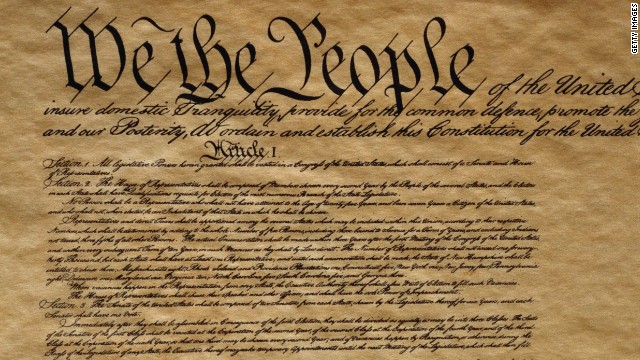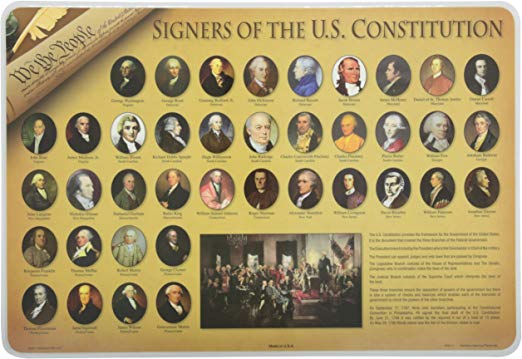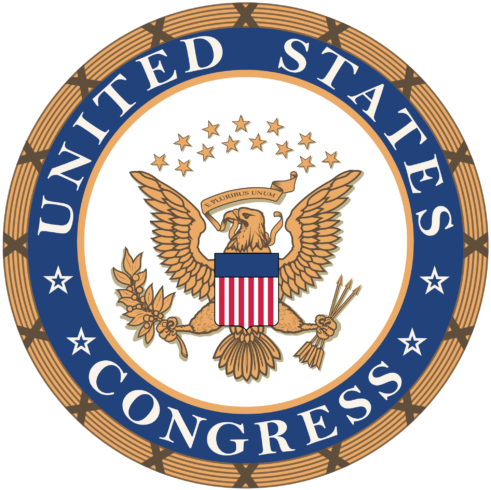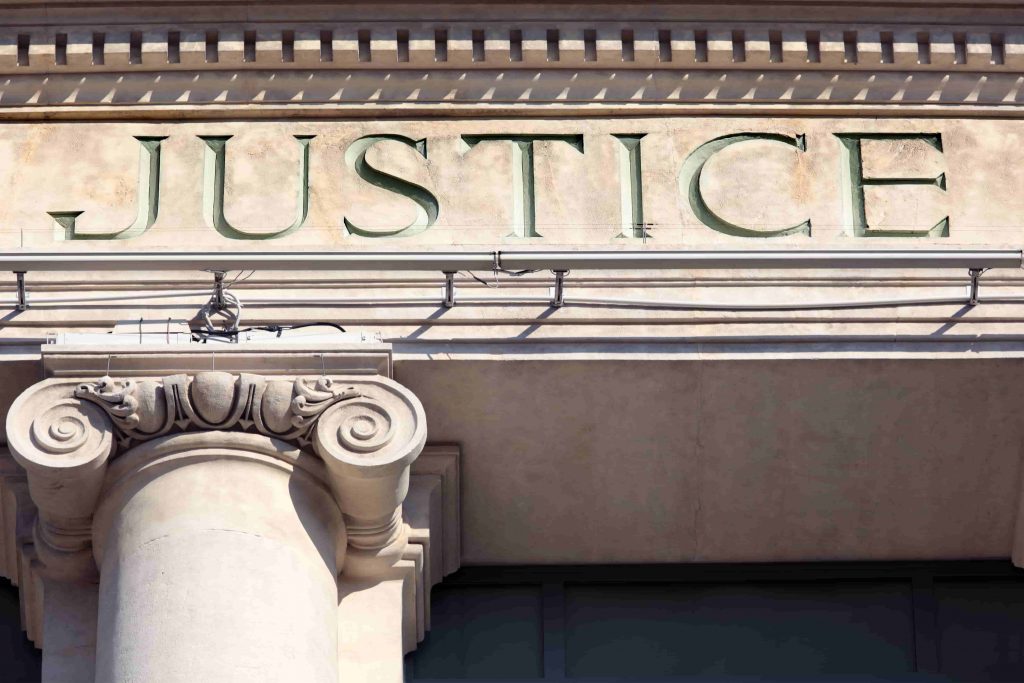US Constitution Test Study Guide
Oops, cramming for that Constitution exam tomorrow? This US Constitution test study guide will cover the main areas you need to know to approach it with confidence. Key terms and subjects that you’ll need to remember are in bold and be sure follow points of interest to develop your answers. Need more help?
 What Came Before
What Came Before
The United States Constitution was not the first document to dictate the political and judicial makeup of the country. The Articles of Confederation (1771-1789) provided a generally weak framework for a central government since it wanted to emphasize the independence and free-will of the 13 states. Its powers were limited to international diplomacy, national territory, and declaring war (no plans for taxation are a key problem here).
Its President (the President of the Congress) was largely ceremonial as a debate moderator for the 13 states. Failure of the states to work together meant that a better system with a strong central government needed to be put in place. However, it would be enough to win the revolutionary war and establish the Declaration of Independence (1776). This saw the 13 states as independent from Britain and that they would unite to form a nation-state. The Constitution would then need to perform a balancing act between centralizing power (not allowing states/the electorate to do as they please) and avoiding tyranny (not becoming like Britain).
Points of interest:
- How did the War of Independence shape the political foundations of the United States?
- What previous document/s dictated the government of the United States? What were their limitations?
Writing the document
 The United States Constitution (1787) was drafted during the Constitutional Convention in Philadelphia and defined the American government as a constitutional republic. It gives power to its citizens in the preamble by beginning with “We the People” rather than owing itself to the inherited position of a throne (Britain’s constitutional monarchy).
The United States Constitution (1787) was drafted during the Constitutional Convention in Philadelphia and defined the American government as a constitutional republic. It gives power to its citizens in the preamble by beginning with “We the People” rather than owing itself to the inherited position of a throne (Britain’s constitutional monarchy).
Those who helped draft the Constitution alongside the signers of the Declaration of Independence were the Framers of the Constitution. As expected, most of these 55 men were wealthy land-owners with a significant portion owning slaves (a smaller number were entirely dependent on slave-labor). While it only required 9 of the 13 states to be enacted, it was ensured that amendments to the constitution could be made in future. Rhode Island was the final state to ratify the constitution.
Like the Articles of Confederation, many disagreements were made over its contents which meant that compromise needed to be made. The Virginia Compromise called for representation of each state to be determined by population whereas the New Jersey Compromise wanted equal representation for each state. The joining of the two, the Connecticut Compromise, made Congress bicameral.
Points of interest:
- Who wrote the Constitution? Where and when was this conducted?
- What are amendments and how many have been made?
- What is the term for how power is shared between federal, state and local government?
How the Constitution designs our Political System
The Constitution divided the government into three branches who would provide checks and balances on their powers. These were the Legislative (congress), Executive (the president) and Judicial (the supreme court).
Legislative
The Legislative Branch is set out first and given the most attention. It’s job is to make laws in congress which is separated into two chambers: the House of Representatives and the Senate. It is a requirement of the constitution that Congress assembles at least once a year. As of 2019, the House of Reps (lower chamber) consists of 435 seats that are divided amongst the 50 states on the basis of their population size.
At the time, Native Americans were not counted in the census and “all other persons” (slaves) were counted as 3/5 of a person, although this was stopped by Amendment 14.
Elections for representatives are held every 2 years with candidates needing to be residents of their state, 25 or older and having been a citizen for at least 7 years. The Speaker of the House is elected by majority, meaning it will be the leader of the controlling party.
The Senate (upper chamber) is comprised of 2 seats for each state, making 100 members total as of 2019. Senators serve 6 year terms with the requirement that they are at least 30, have been citizens for at least 9 years, and are residents of their state. The Senate is led by its Presiding Officer who is usually the Vice President.
 Congressional members are elected by direct popular vote from their constituents (congressional districts elect the House of Reps whereas Statewide elections appoint senators). This system of legislature is a representative democracy where citizens elect members to make laws on their behalf (this is opposed to direct democracy where citizens would vote on matters individually). This is an example of the constitution centralizing power while avoiding tyranny of monarchy.
Congressional members are elected by direct popular vote from their constituents (congressional districts elect the House of Reps whereas Statewide elections appoint senators). This system of legislature is a representative democracy where citizens elect members to make laws on their behalf (this is opposed to direct democracy where citizens would vote on matters individually). This is an example of the constitution centralizing power while avoiding tyranny of monarchy.
Section 8 approves Congress to conduct taxation which avoids the problem of weak governance set out in the Articles of Confederation.
Bills can originate from both houses but must also be approved by the majority in both.
The President must also approve, but this can be avoided in different circumstances. If the President rejects a bill it can return to the chamber it was proposed by and become law if 2/3 of its seats approve. Similarly, if the President sits on a bill for 10 days without rejection it will become law. Congress has the power to impeach the President. It is initiated in the House of Reps and subsequently tried in the Senate. Congress also has the ability to declare war.
Test your knowledge:
- Which chamber has two representatives from each state?
- Senate
- House of Reps
- What is the difference between representative and direct democracy?
- An election is being held for the Senate in Ohio. Who determines the vote?
- The House of Reps
- Residents of Ohio
- The Electoral College
- No one, senators are appointed by local judges
Executive
The Constitution then defines the Executive branch made up the President, the Electoral College, and the Cabinet. The Electoral College is responsible for electing the President. The amount of Electoral College members in each state is equivalent to the sum of their congressional seats:
Senate seats + House of Representative Seats = number of electoral voters per state
When citizens vote ‘for the President’ they are effectively voting for a potential elector who will in turn vote for their Presidential choice. No part of the constitution requires electors to vote in accordance with the popular vote. The candidate must win the majority of electoral votes (270 out of 358) to assume the Presidency.
The President is titled the ‘Commander in Chief’ by the Constitution, assuming the highest position in all branches of the United States Armed Forces and the executive. A President is tasked with directing foreign treaties and nominating judges to the Supreme Court. Presidents enforce bills passed by the legislative branch.
Presidential candidates must be at least 35, a natural-born citizen, and a resident for at least 14 years of their life.
Presidents serve 4 year terms and could initially serve as many terms as possible, although 22nd Amendment (1951) placed a 2-term limit on the position. FDR is the only President to have served 4 terms.
If a President is incapable of holding office then the Presidential line of succession determines who takes their place. The Vice President would be first followed by the Speaker of the House and so on. The President is able to pardon anyone who commits crimes against the United States. The President can also veto any bill put forward by Congress.
Test your knowledge:
- True or false: the President is elected via popular vote.
- What decides the number of Electoral College Voters?
- The exact number is ratified in the Constitution
- Proportional to population-size of each state with a maximum of 538
- Sum of Congressional Seats
- What are the three requirements for Presidential and Vice-Presidential candidates?
Points of interest:
- What could have motivated the constitutional framers to enact an Electoral College?
Judicial
The 3rd article establishes the Supreme Court comprising of 9 judges who serve life appointments, although they can be removed via impeachment. Congress has the ability to set up inferior courts. These courts can rule on all cases that full under the Constitution. The Supreme Court is charged with interpreting the law and deciding what is constitutional and unconstitutional. The Constitution outlines treason as its only crime. The Supreme Court is able to declare any law or act committed by the Executive or Legislature as unconstitutional.
Test your knowledge:
- How many Judges are on the supreme court?
- 7
- 9
- 13
- How are Supreme Court judges selected?
- Nominated by the President and confirmed by both chambers of Congress
- Nominated by the President and confirmed by the House of Reps.
- Nominated by the President and confirmed by the Senate
- Directly appointed by the President
- What branch of government can have their actions deemed unconstitutional by the Judiciary?
- Legislative
- Executive
- Both
Federalism and Amendments
The Constitution has been very effective in centralizing the power of government compared to previous attempts. Some feared that this threatened the rights of states and individuals, namely James Madison who had written the first 10 amendments to the Constitution entitled the Bill of Rights.
Notable was the freedom of speech and separation of church and state (1st), the right to bear arms (2nd), the need for warrants (4th) and the right to not plead against yourself in court (5th). The 10th amendment ensures Federalism, in that power is shared between national and state governments. This meant that any power that isn’t described as Congressional belongs to the states of the people. However, the Elastic Clause allows for Congress to act outside the explicit language of the Constitution if it can rationalise that it fits within its delegated powers.
Amendments can be proposed by 2/3 of both chambers of Congress or state legislatures. They are ratified by ¾ of state legislatures or state ratifying conventions. The president has no official role in these proceedings. As of 2019, 33 amendments have been made to the Constitution.
Points of interest
- The 33 amendments vary in scope and effect. What are the most important amendments in your view? What are the least important?
- What is problematic about the Elastic Clause? Would it be supported or objected by federalists?
You Might Also Be Interested In: Learn How to Study for a Test or Course the Easy Way
United States Constitution Test Study Guide

These are some of the topics that you want to dive into deeply and make sure that you can cover at least the basics of each whether it’s for the US History exam, government and politics test or an AP Exam. Often you’ll see questions coming right from these topics, so take the time to check them out and know the answers!
- Functions of the Judicial, Legislative, and Executive Branches
- Definition of Pardon
- Head of the Executive Branch
- # of Justices, including the Chief Justice, make up the Supreme Court
- Term of a Supreme Court Justice
- Term of a member in the House of Representatives and Senate
- Qualifications for a member of the House of Representatives
- Who holds the concurrent powers?
- What Amendment states no state can deny people their basic rights?
- 1st Ten Amendments is called what?
- What year did the Constitution become effective?
- Who presides over the Senate?
- What amendment guarantees the right to bear arms?
- What amendment provides rights for the accused in terms of punishment?
- What amendment contains a due process clause?
- What amendment ended slavery?
- What 2 things did the Declaration of Independence do?
- Who had the final say in all matters under the Articles of Confederation?
- What was the form of government in which power is handed down from one generation to the next?
- What were the most striking characteristics of the framers of the Constitution?
- What city did the constitutional convention take place in?
- Know the difference between direct and representative democracy.
- How many Presidents have served a complete four terms in office?
- What amendment addresses the term limits of the President?
- What group elects the President?
- Know the differences between the Virginia, New Jersey, and Connecticut Compromises.
- What is impeachment an example of? Who holds the power of impeachment? Who is the jury?
- How many colonies were at the First Continental Congress?
- What is the minimum number of electoral votes to be elected President?
- How many members are there in the House of Representatives and Senate?
- What type of government does the Constitution create?
- Know what the elastic clause does for the constitution.
- In order to add an amendment to the constitution – it has to pass by what margin and does it need a presidential signature?
- What does the Constitution state that no person may be deprived of?
- A trial by jury cannot be denied if the value of the lawsuit exceeds what $ amount.
- What is the minimum infraction necessary for the impeachment of a judge?
- How many times per year is Congress required to be assembled by the Constitution?
- Know what a warrant does for law officials.
- Does the Constitution state anything regarding Church and State?
- Know the Presidential succession.
- Know the President’s job descriptions – chief citizen, chief diplomat, commander-in-chief, chief legislator, and chief of state.
- Be able to identify procedures of the US Government as expressed, implied, inherent. (4.1 worksheet)
- Be able to identify what 10 key Presidents were known for. (list of Presidents on Review Day)
- How many amendments are in the Constitution.
- What is a filibuster?
- Who has the power to declare war?
- When are congressional elections held?
- Does the 5th Amendment guarantee that you can’t be tried twice for the same crime?
- What 2 groups make up Congress?
- What court case established Judicial Review?
- Which state was the last state to ratify the Constitution?
- Where does all of the power of government agencies come from?

Enjoy All The Benefits
You don’t pay your first hour unless you find it a good fit.
Only pay for the time you need.
No subscriptions or upfront payments.
Find Tutors Near You